Inishmurray Island

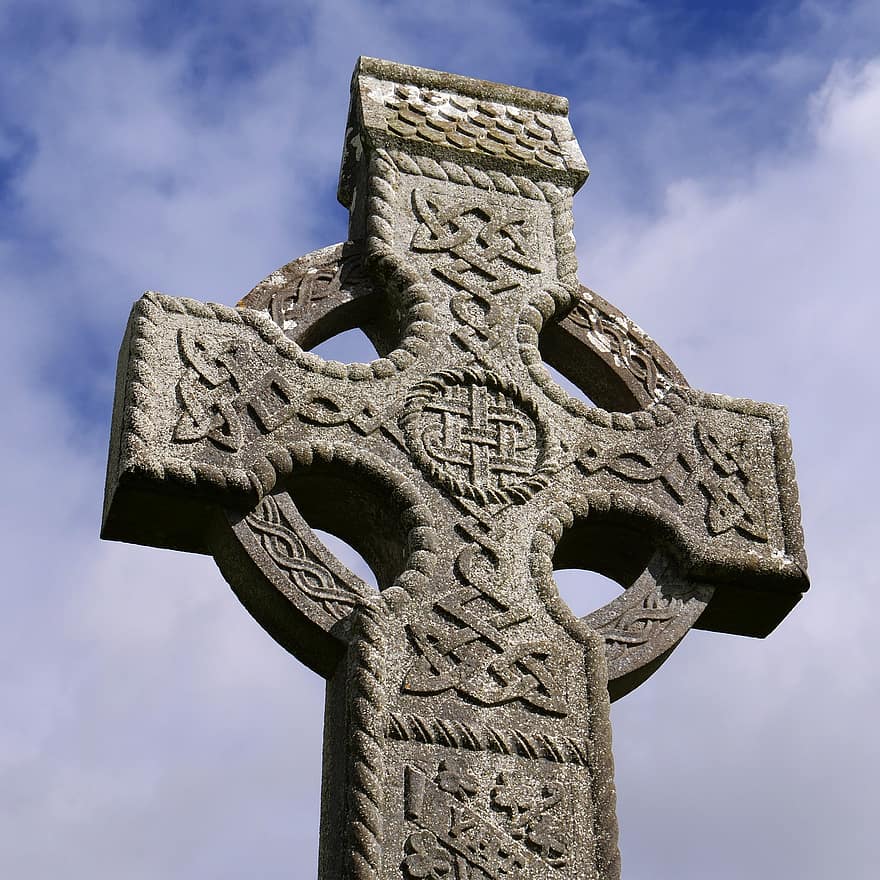
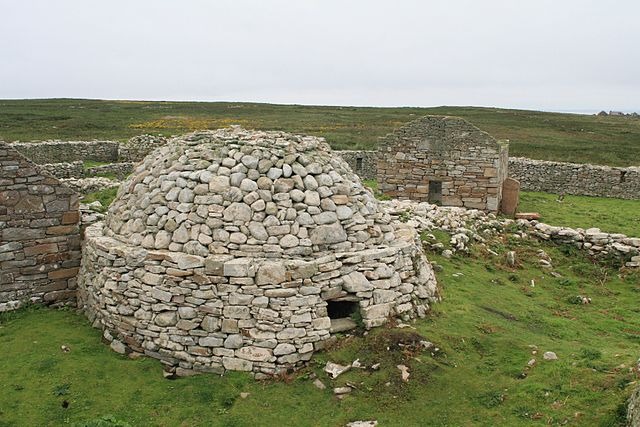
Inishmurray Island
By Sadhbh Ballantine
Religion
St Molaise was one of the founders of an christian monastery on Inishmurray in the 6th century. The remains of it is still intact today. St Molaise was also the founder of Inishmurray.our parish is part of the Inishmurray parish.Fr Christy McHugh P.P use to do mass over on Inishmurray. Sadly you can no longer visit Inishmurray because of the conditions in the water. It is not safe to travel by boat.

The Cursing Stones The largest alter inside the compound is the Clocha Breacha most likely known as the cursing or Speckled Stones. The abilities of the stones were said to have been invoked by the people who lived on the island in the early 1800`s were against some men related to the coast guard who invited the wrath of the Inishmurray people. Those men all perished at sea a short time after. Not long ago it was used by a woman from mainland who went to the island invoke the dark presence`s powers against Hilter. Proof indeed of the power of the stones.
Leaving Inishmurray island
Inishmurray used to be a thriving community but now it is an abandoned island. The island was evacuated on November 12th, 1948. On that very day, 46 people from the island from six families left to live on the mainland by Sligo Council.
THE END
Thank you for taking a look at my project. Please take a look at my school mates other project. I hope you enjoyed it.

FACTS ABOUT INISMURRAY:
1.The Island is situated off the coast of Sligo about 7km from Streedagh.
2.It covers 228 acres.
3.It's 1mile long and 3/4 miles wide.
4.It's uninhabited since 1948.
5.It may be named after an early saint,St.Muiredach mac Echdach.
6.In 807 it was attacked by Vikings.
7.St.Molaise founded a monastery in the 6th century that still stands today in an enclosure called the Cashel.
8.The statue of St.Molaise now stands in a museum in Dublin.

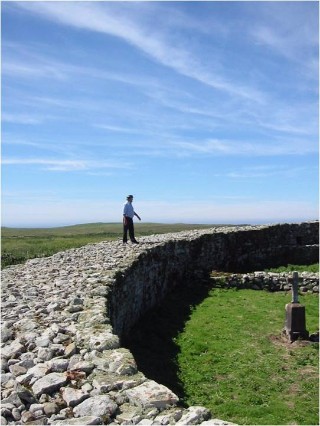
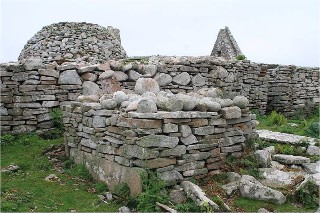
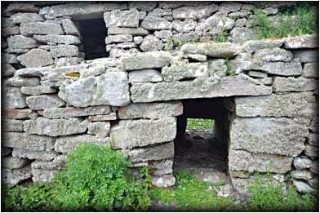
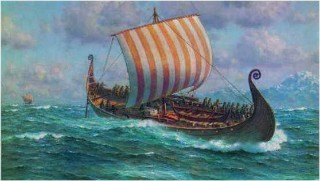

INFORMATION ON MY GRANDAD,CHRISTY HERRITY
My Grandad was born on Inishmurry Island in March, 1922. His parents were Dan and Ellen and he had 3 brothers and 3 sisters.Two of his brothers died very young and are buried on the island. There was a hole on the island where they used to swim and fish from. They went to school on the island in a one room school with only one teacher called Mrs. Herrity. My Grandads family left the island when he was 13 and came to live on the mainland. My Grandad has great stories about his life on the island and I am very proud of him and that he came from Inishmurray island.
By Conor White
Inishmurray
by Grace Mc Carthy
Inishmurray is a small island which lies off the coast of Sligo about 7km from Streeagh.The island was created around 7,000 BC when a global rise in sea levels flooded low-lying parts of the Irish coast. It is one and a half miles long and one mile wide .
— The first people to settle on the island may have arrived as early as 2,000 BC. We have no evidence of the way they lived , but a very old food vessel was found in 1938 on the island by the sea shore.
Monks lived on Inishmurry for 5 to 6 hundred years. one Monk St Molaise founded the monastery there around 520 AD
The wooden statue of Saint Molaise is now in the National Museum of Ireland A copy of this Statue is in the car park by the playground
—All the monks lived in houses just outside the cashel.Thecashelis a big circle of land with a big stone wall surrounding it. Inside the cashelwhere very interesting things such as St MolaiseChurch. — One interesting thing I liked when I was there where the cursing stones na cloch breac. These are a mound of stones like an altar, on top are lots of round stones and a cross ,if you count the stones you never get the same number its different ever time. They were used either to bless (by spinning clockwise) or curse (spin anti-clockwise)— Beside the cursing stones is a birth stone. This is a tall stone with a cross on it and you put your hands in to the holes each side of it and wished for a baby.
— On the doorstep of St Molaise’s church there is a red stain which was the blood of a monk who was killed on the step by the Norseman who had invaded the island. The stain never fades away and the stain is suppose to get brighter at Christmas time
— One very interesting place is Teach na Teine or house of fire .Inside this house is a hole in the center of the floor and if your fire went out you could put a sod of turf in the hole and it would light up again. A story on the island tells of a man how did not believe this and went to the toilet in the hole and he burst in to flames and all that was left of him was a pile of bones.
— The sweat house is a stone building with 2 parts. The first is a big area which holds a big fire. The smaller one is where the monks went into and prayed and did their penance. It would have been very hot in there as it was all closed in. Also there is a beehive hut on the island here is a picture of it on the right
— The Vikings Raided the Island in 807 for the first time .This kept happening over the years which is one of the main reasons why the monks had to leave the island.
— During the early Christian period, a lot of stone carvings took place on the island most are carved stones and slabs , many with interesting and unusual crosses. The art of Inishmurray has links with the Holy Land, as several of the cross styles were used by crusading knights
— From the sixth century people lived on Inishmurry although the population got bigger and smaller through the years.
— In 1880 a total of 102 people lived on the island. But this had fell to forty-six by the time they left in 1948, people moved to the main land for better lives.
My Grandad was one of them . Also the fact that their was no turf left on the bog which was there main source of fuel and the only people left where very old or children.

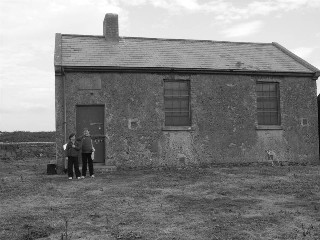
This is my Grandad, Christy Heraghty, outside his old house
— Life on the Island was very hard but they lived a very healthy life.They grew their own vegetables. They made their own butter and cheese and ate fresh fish and sometimes meat from their small farms
— The main source of work and money was fishing and farming. They had to bring their cows by boat to Streedagh beach then walk to Grange to sell them at the fair. Some men made poteen a kind of whiskey which was not allowed by law but because they lived on an Island they could see the guards coming from far away and this gave them time to hide their whiskey
— Most of the houses are in ruins, there are about 15 of them. The only Building left standing is the old school house, which the board of works fixed up. They also put the old crosses and stone slabs which were being worn away by the weather in to the school for safe keeping.
You can see Inishmurry from the first beach at streedagh if you can please try to visit the island as it is a very interesting place.
Last changed: Jun 20 2021 at 4:00 PM

